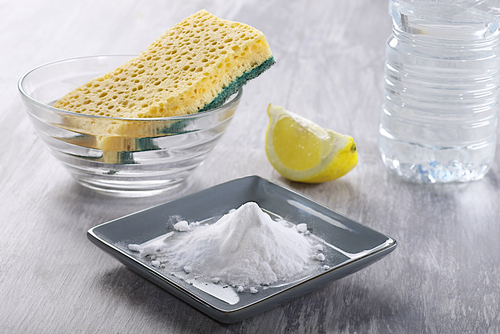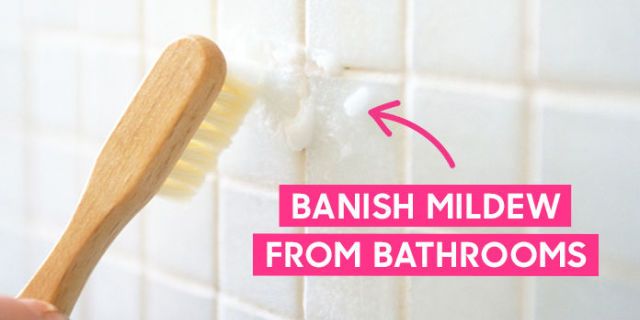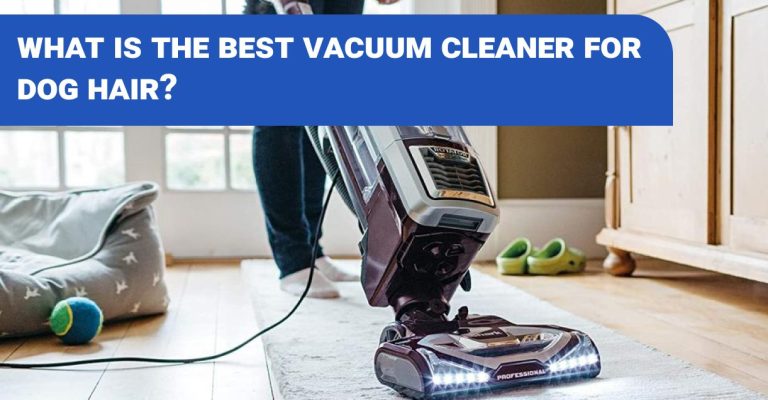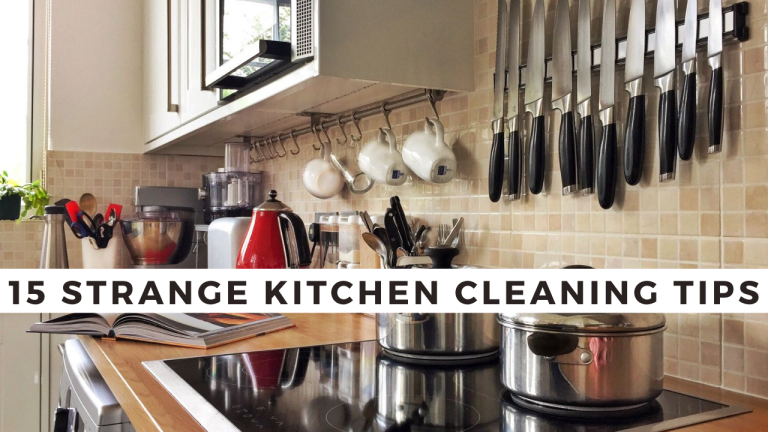There are various regular family unit items that can be utilized for a large number of cleaning undertakings. One of these items is heating pop.
This common item, with the exception of modest, is an incredible answer for an incalculable number of cleaning errands. It would shock you how powerful it tends to be in circumstances that may appear to be unsolvable without including costly business cleaners.
What makes heating pop truly stand out is its natural abrasiveness and unique chemical properties. When mixed with an acid like vinegar or lemon juice, it produces a gentle fizzing action that can help lift dirt, grime, and even stubborn stains. Its gentle texture means it’s tough on messes but safe enough for most surfaces around the home. Whether you’re scrubbing a greasy oven, deodorizing musty carpets, or tackling a mysterious stain, heating pop is an economical and environmentally friendly option that can handle a surprising variety of tasks.
How Baking Soda Works as a Cleaning Agent
Baking soda gets its cleaning superpowers from both its texture and its chemistry. As a mild alkali, it helps dissolve dirt and grease quickly, making your cleaning chores much less of a headache. When you sprinkle it on a damp surface, its gentle abrasiveness helps you scrub away grubby stains without scratching delicate materials—think of it as nature’s own scouring powder.
But that’s not all. When mixed with an acid like vinegar or lemon juice, baking soda fizzes up, releasing bubbles of carbon dioxide. This bubbling action helps lift grime, bust through stubborn gunk, and refresh surfaces, all without the need for harsh commercial chemicals.
On top of that, baking soda naturally neutralizes unpleasant odors rather than just masking them. So, whether you’re looking to banish a funky fridge smell or deodorize a cherished carpet, baking soda steps up as a safe, budget-friendly hero in your cleaning toolkit.
Here is the manner by which to utilize heating baking soda when cleaning.
Surfaces and Items to Avoid When Using Baking Soda
While baking soda is a cleaning superstar in many scenarios, it’s important to remember that it isn’t a one-size-fits-all solution for every surface around your home.
Skip using baking soda on:
- Glass surfaces, such as windows and mirrors—its gritty texture can leave unwanted scratches.
- Flat stove tops made from glass or ceramic, as repeated use may dull their shine.
- Finished wood floors and furniture, which can lose their luster if scrubbed with abrasive powders.
- Aluminum cookware, since baking soda may react with it, leading to discoloration.
- Natural stone surfaces like marble or granite—these materials are vulnerable to scratching and etching.
- Gold-plated items, pearls, opals, and other delicate gemstones, where abrasives can cause irreparable damage.
- Electronic devices, which don’t play nicely with powders or moisture.
In short, save your baking soda for hardy surfaces and steer clear of any materials likely to scratch, cloud, or discolor.
You may also like to read: ” 50 Clever Ways to Clean with Baking Soda “
Directions for Baking Soda Cleaning
1. Use preparing baking soda to expel oil from the oven, back sprinkle, etc. Basically, sprinkle some heating baking soda on a clammy wipe and rub the oil stain until it is no more.
If your stovetop has become a sticky, greasy mess with bits of food clinging on for dear life, don’t panic—baking soda is your secret weapon. Mix a little baking soda with water to create a paste, then apply it to the stubborn spots. Let it sit for a few minutes to break down the grime, and then gently scrub with a soft sponge or cloth. This method works wonders on most stovetops and back splashes.
A quick note: If you have a smooth glass stovetop, be gentle! Avoid using anything too abrasive that could scratch the surface. In such cases, opt for a cleaner specifically made for glass stovetops.
With just a bit of elbow grease, your oven and stovetop will look fresh and clean—no expensive cleaners required.
You can also read about: ” Top 5 Cleaning Hacks for Cleaning Chore Haters “
2. Get free of horrendous smell in your carpet by covering the hazardous zone with heating pop. Let the powder sit on the carpet for the time being, and vacuum it up in the first part of the day. On the off chance that the scent remains to rehash the procedure.

3. Remember that for increasingly difficult scents, you may need to utilize proficient assistance, for example, Dirt2Tidy cleaning administrations Australia, which incorporate carpet cleaning.
You may also like to read: ” DIY Natural Cleaning Products “
4. Make your baths and sinks shining clean by baking soda cleaning them with a clammy wipe and preparing pop. The heating baking soda will leave them perfect and decent smelling without a scratch on the finish. For dull or stained stainless steel sinks, fixtures, and appliances, sprinkle a liberal amount of baking soda directly onto the surface. Use a damp microfiber cloth or sponge to gently scrub stains and buildup. Pay special attention to any grime around faucets and edges. After scrubbing, rinse thoroughly with cool water. This method not only cleans but also helps restore shine, leaving your stainless steel sparkling and free of harsh chemical smells.
5. Keep the channels in your home clean by pouring a blend of ¼ cup of heating pop and 1 cup of vinegar into them now and again. Let the arrangement labor for a moment, at that point dump some boiling water to wash. In most situations, you’ll only need water to mix with baking soda to achieve your desired cleaning results, but for stubborn drain build-up, the addition of vinegar helps break down grime and deodorize. This simple method not only freshens your pipes but also helps prevent blockages—all without the need for harsh chemicals.
You may also have to read: ” The Housework Hater’s – Healthy, Quick Cleaning Guide “
6. Baking soda cleaning can assist you with getting free of undesirable bugs. Basically, sprinkle heating baking soda around pantries and cupboards and different spots that the bugs may run.

7. Use heating baking soda to kill scents in your cooler. Open a crate of heating pop and put it into the refrigerator for two or three days.
8. If you consume a pan, sprinkle a liberal measure of preparing soft drink over the skillet’s base while it is as yet hot and let it drench for at any rate 60 minutes. Clean the pan not surprisingly. For especially stubborn, baked-on bits—such as those found on ovens, pots, pans, or other cookware—make a paste by mixing baking soda with a little water. Apply the paste generously to the affected area and allow it to sit for 15 to 30 minutes before scrubbing away the residue. This method helps loosen even the toughest grime, making your cookware look good as new with minimal elbow grease.
Safety Tips When Using Baking Soda for Cleaning
While baking soda is a handy cleaning companion, it’s smart to be aware of a few precautions to ensure you don’t run into any mishaps along the way.
First off, remember that baking soda is mildly abrasive. This grit makes it fantastic for scrubbing away grime from sinks and ovens, but it can also leave tiny scratches on delicate surfaces. Steer clear of using it on:
- Glass surfaces like mirrors and windows
- Smooth stovetops
- Finished wood furniture or floors
- Natural stone surfaces such as marble or granite
- Aluminum cookware (to avoid discoloration)
- Gold-plated items or precious gems like pearls and opals
- Electronics or delicate devices
If in doubt, test a little spot out of sight before diving in.
Mixing Matters
To stay safe and avoid dodgy chemical reactions, never mix baking soda with:
- Ammonia
- Chlorine bleach
- Hydrogen peroxide in a sealed container
- Alcohol
- Other chemical cleaning agents
Combining these with baking soda can sometimes reduce its cleaning power, but in other cases, you could end up with unwanted fumes or even build up dangerous pressure inside closed containers.
Most of the time, all you need is a little water alongside your trusty baking soda to tackle tough stains and smells. Keep these simple tips in mind, and your DIY cleaning adventures will stay both safe and effective!
You may also like to read: ” Importance of Using Non-Toxic Cleaning Products “
For additionally baking soda cleaning tips and deceives, you can call the Dirt2Tidy cleaning Australia group. They would be happy to assist you with some free counsel.





